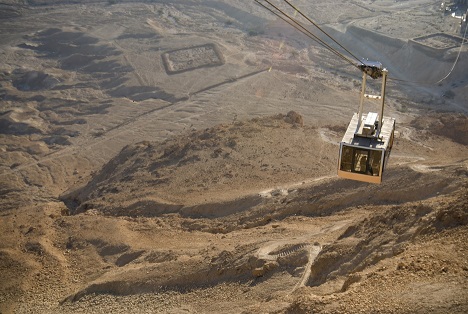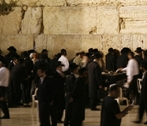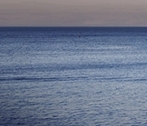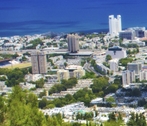Located on a mountaintop high above the Judean Desert, Masada in Israelhas become one of the most popular destinations for tourists seeking out the best historical sites the Holy Land has to offer.
The history of Masada
The history of Masada in Israel stretches all the way back to the 2nd century BC, when the first fort was built on the mountaintop. The site was enlarged by Herod the Great, who added a palace, battlements, and protective borders. Remains of these features can still be seen today. Herod resided in the palace at Masada until his death in 4 BC. The Romans took possession of the site, before being repelled by the Jews in AD 66. The site remained the last Jewish stronghold until a Roman siege breached the walls in AD 73, expelling the Jews in the process. Today, Masada is recognized as a UNESCO World Heritage Site.
Touring the site
Thanks to its historical significance, its archaeological beauty, and the stunning views it offers, Mount Masada is one of Israel’s true tourist favorites. Visitors who want to get the most of their visit should climb the Snake Path, a twisting pathway that ascends the 440m cliff face. The walk takes around about an hour to complete, but offers terrific views along the way, as well as a great sense of achievement. However, the cable car operates regularly, and is the easy alternative. Another option is driving around an hour to the Roman Ramp, on the west side of the mountain, which offers a less strenuous path.
Once you reach the summit, and once you’ve taken in the spectacular vista, a tour of the fortress remains offers some excellent features. Be sure to check out the Hanging Palace, the Western Palace and its mosaic floors, and the cistern, amongst other impressive features. An impressive light and sound show, performed against the backdrop of the night sky, offers an excellent way to learn the history of the site. Daytime visitors will find plenty of literature to learn the basics.
Getting to Masada
Masada is located close to the banks of the Dead Sea which makes it readily accessible from most of Israel’s most popular tourist destinations. Visitors staying in Jerusalem or on the shores of the Dead Sea are can enjoy a daytrip, while those travelling from Eilat should book overnight accommodation orexpect a very long day.
Where to eat
The summit of Mount Masada offers water fountains only. The site’s visitor center at the base of the mountain features a small food court. Visitors will find a better choice of cafés, restaurants, and other eateries in nearby Ein Bokek.
When to visit
The Masada Sound and Light Show is operational between March and October, so visiting during these months is highly recommended. The site gets busiest during July and August, when the temperature is at its hottest.
Want to visit Masada? Click for more information about car rental in the Israel





































